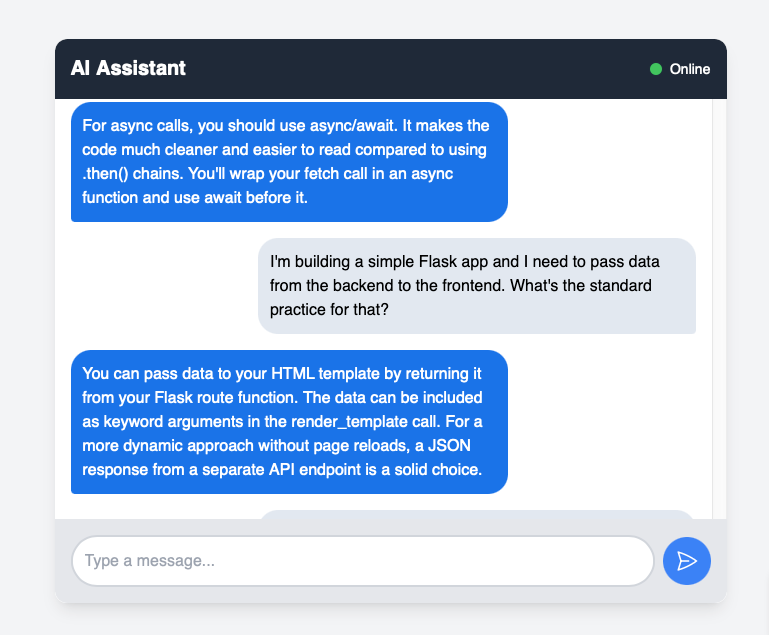How to Build a Mobile-Friendly Website: Responsive Layouts, Best Practices, and Optimisation Guide
- Samul Black

- Aug 25
- 5 min read
In today’s digital world, most users browse the web on their smartphones and tablets, not just desktops. If your website doesn’t adapt seamlessly to different screen sizes, you risk losing visitors, customers, and search engine visibility. A mobile-compatible, responsive website ensures that your content, design, and functionality remain smooth and accessible across all devices. In this guide, we’ll explore the key strategies, tools, and best practices to build websites that deliver a consistent and engaging experience—no matter what device your audience is using.

Why Mobile Compatibility Matters for Modern Websites
Creating a mobile-compatible website isn’t just about aesthetics—it directly affects usability, conversions, and search engine performance. Google uses mobile-first indexing, meaning it primarily considers the mobile version of your site for ranking. If your site doesn’t perform well on mobile, it won’t perform well in search results either. On top of that, a poor mobile experience often leads to higher bounce rates and lost opportunities. Key benefits of mobile-friendly websites:
Better User Experience – Visitors can easily read, navigate, and interact with your site on any screen size.
Higher Search Rankings – Mobile-optimized sites rank better on Google due to mobile-first indexing.
Increased Engagement – Users stay longer and explore more when navigation and readability are seamless.
Improved Conversion Rates – A smooth mobile experience builds trust and encourages purchases or sign-ups.
Future-Proof Design – Responsive layouts adapt to new devices and screen sizes without requiring major redesigns.
A mobile-compatible website is no longer a “nice-to-have”; it’s a necessity for visibility and growth. By ensuring your site looks and functions well across all devices, you’re not only improving user satisfaction but also securing stronger SEO performance and long-term success.
How to Make Your Website Mobile Compatible
Mobile compatibility comes down to combining good design principles with practical coding techniques. Below are the most important components, explained in detail and paired with examples you can use to bring them into your projects.
1. Responsive Layouts
A responsive layout allows your website’s structure to adjust fluidly depending on the device size. Instead of fixed widths, elements use relative units so they can shrink or expand naturally. This makes sure your design looks good on desktops, tablets, and smartphones without separate versions of the site.
<!DOCTYPE html>
<html lang="en">
<head>
<meta name="viewport" content="width=device-width, initial-scale=1.0">
<style>
.container {
display: flex;
flex-wrap: wrap;
}
.box {
flex: 1 1 250px;
margin: 10px;
padding: 20px;
background: #4CAF50;
color: white;
text-align: center;
}
</style>
</head>
<body>
<div class="container">
<div class="box">Box 1</div>
<div class="box">Box 2</div>
<div class="box">Box 3</div>
</div>
</body>
</html>On large screens, the boxes sit side by side; on smaller screens, they stack neatly.
2. Mobile-First Media Queries
Media queries apply specific styles based on device characteristics, most commonly screen width. A mobile-first approach means designing for the smallest screens first, then progressively enhancing the layout for larger screens. This ensures performance is optimised for mobile users.
<!DOCTYPE html>
<html lang="en">
<head>
<meta name="viewport" content="width=device-width, initial-scale=1.0">
<style>
body {
background: lightblue; /* default mobile style */
}
@media (min-width: 768px) {
body {
background: lightgreen; /* tablets */
}
}
@media (min-width: 1024px) {
body {
background: lightcoral; /* desktops */
}
}
</style>
</head>
<body>
<h2>Resize the window to see the background change</h2>
</body>
</html>3. Flexible Grids and Containers
Flexible grids let you organize content into neat, adaptable layouts. CSS Grid and Flexbox make it simple to create structures that scale, so columns collapse into rows on smaller devices without breaking the design.
<!DOCTYPE html>
<html lang="en">
<head>
<meta name="viewport" content="width=device-width, initial-scale=1.0">
<style>
.grid {
display: grid;
grid-template-columns: repeat(auto-fit, minmax(200px, 1fr));
gap: 15px;
}
.item {
background: #2196F3;
color: white;
padding: 20px;
text-align: center;
border-radius: 5px;
}
</style>
</head>
<body>
<div class="grid">
<div class="item">1</div>
<div class="item">2</div>
<div class="item">3</div>
<div class="item">4</div>
</div>
</body>
</html>On wide screens, you’ll see multiple columns. On narrow screens, items stack automatically.
5. Scalable Images and Media
Fixed-size images break layouts on mobile. Scalable images resize automatically so they never overflow their container. This ensures visuals look sharp and load correctly across devices.
<!DOCTYPE html>
<html lang="en">
<head>
<meta name="viewport" content="width=device-width, initial-scale=1.0">
<style>
img {
max-width: 100%;
height: auto;
display: block;
margin: auto;
}
</style>
</head>
<body>
<h2>Responsive Image</h2>
<img src="https://via.placeholder.com/800x400" alt="Example">
</body>
</html>The image automatically fits smaller screens without stretching.
6. Optimized Typography
Text should be readable without zooming or horizontal scrolling. Using relative units like em or rem for font sizes helps scale text based on device resolution, while proper line spacing improves readability.
<!DOCTYPE html>
<html lang="en">
<head>
<meta name="viewport" content="width=device-width, initial-scale=1.0">
<style>
body {
font-size: 1rem;
line-height: 1.6;
padding: 15px;
font-family: Arial, sans-serif;
}
h1 {
font-size: 2rem;
}
p {
font-size: 1rem;
}
</style>
</head>
<body>
<h1>Mobile-Friendly Typography</h1>
<p>This text adjusts smoothly to different screen sizes, ensuring readability without zooming.</p>
</body>
</html>Fonts stay legible on both small and large screens.
Best Practices for Mobile-Friendly Websites
In addition to the core components of responsive design, there are several best practices that ensure your site delivers a polished, user-friendly mobile experience. These are not always about layout—they cover usability, accessibility, and performance.
1. Viewport Meta Tag
The viewport tag tells browsers how to render a page on mobile. Without it, users may see a shrunken desktop version of your site.
<meta name="viewport" content="width=device-width, initial-scale=1.0">This sets the page width to the device screen and scales content appropriately.
2. Clickable Areas and Spacing
Touch interactions require bigger targets than mouse clicks. Buttons, links, and form inputs should be large enough to tap comfortably, with spacing to prevent mis-taps.
<style>
button {
padding: 12px 20px;
font-size: 1rem;
border-radius: 6px;
}
</style>3. Mobile-Friendly Forms
Optimized forms improve conversions on mobile. Using the right input types (like email, tel, number) ensures mobile browsers bring up the correct keyboard for easy input.
<form>
<input type="email" placeholder="Email">
<input type="tel" placeholder="Phone">
<button type="submit">Submit</button>
</form>The keyboard adapts automatically to the field type.
4. Avoiding Fixed-Width Elements
Fixed-width layouts often break mobile views. Use percentages, fluid widths, or scrollable containers to keep everything responsive.
<style>
table {
width: 100%;
border-collapse: collapse;
}
td {
padding: 10px;
border: 1px solid #ccc;
}
</style>5. Dark Mode Support
Many mobile users browse at night. Supporting dark mode improves comfort and energy efficiency on OLED screens.
6. Cross-Device Testing
Even the best code can behave differently across devices. Testing ensures that design, navigation, and speed remain consistent. Tools like browser dev tools, emulators, and testing on real devices help you identify and fix issues before users encounter them.
With these components and examples, your website will adapt fluidly, remain easy to use, and load quickly across any device.
Conclusion
Building a mobile-compatible website is no longer optional—it’s a necessity for delivering a seamless user experience, improving search engine visibility, and staying competitive in today’s digital landscape. By combining responsive layouts, mobile-first design principles, scalable images, touch-friendly navigation, and performance optimization with best practices like accessibility, dark mode support, and mobile-friendly forms, you can ensure your site looks and functions beautifully on any device. With thoughtful testing, continuous refinement, and attention to both design and performance, you’ll create a website that not only adapts across screens but also engages users, drives conversions, and strengthens your brand’s presence online.









